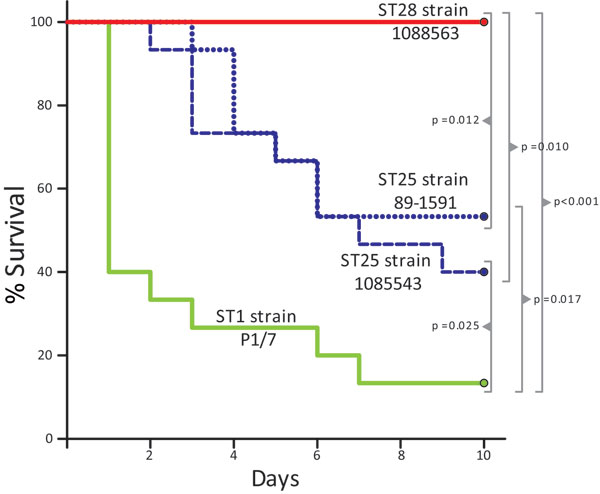Volume 17, Number 12—December 2011
Research
Lineage and Virulence of Streptococcus suis Serotype 2 Isolates from North America
Figure 1

Figure 1. Survival of CD1 mice inoculated with Streptococcus suis strains of different sequence types (STs). Most animals that received the ST1 strain P1/7 died from septicemia during the first 3 days of the trial. Several animals in this group died from meningitis from day 6 postinfection. Two groups of mice received ST25 strains 89–1591 and 1085543, respectively. Survival of mice in these 2 groups was higher than in the group that received the ST1 strain. However, >40% of the animals in the 89–1591 group and 60% of the animals in the 1085543 group died or were killed for ethical reasons before the end of the trial. In strong contrast, all 15 mice in the ST28 strain group survived the trial. Significant differences in survival were noted between groups (log-rank test, p values indicated in the figure body).